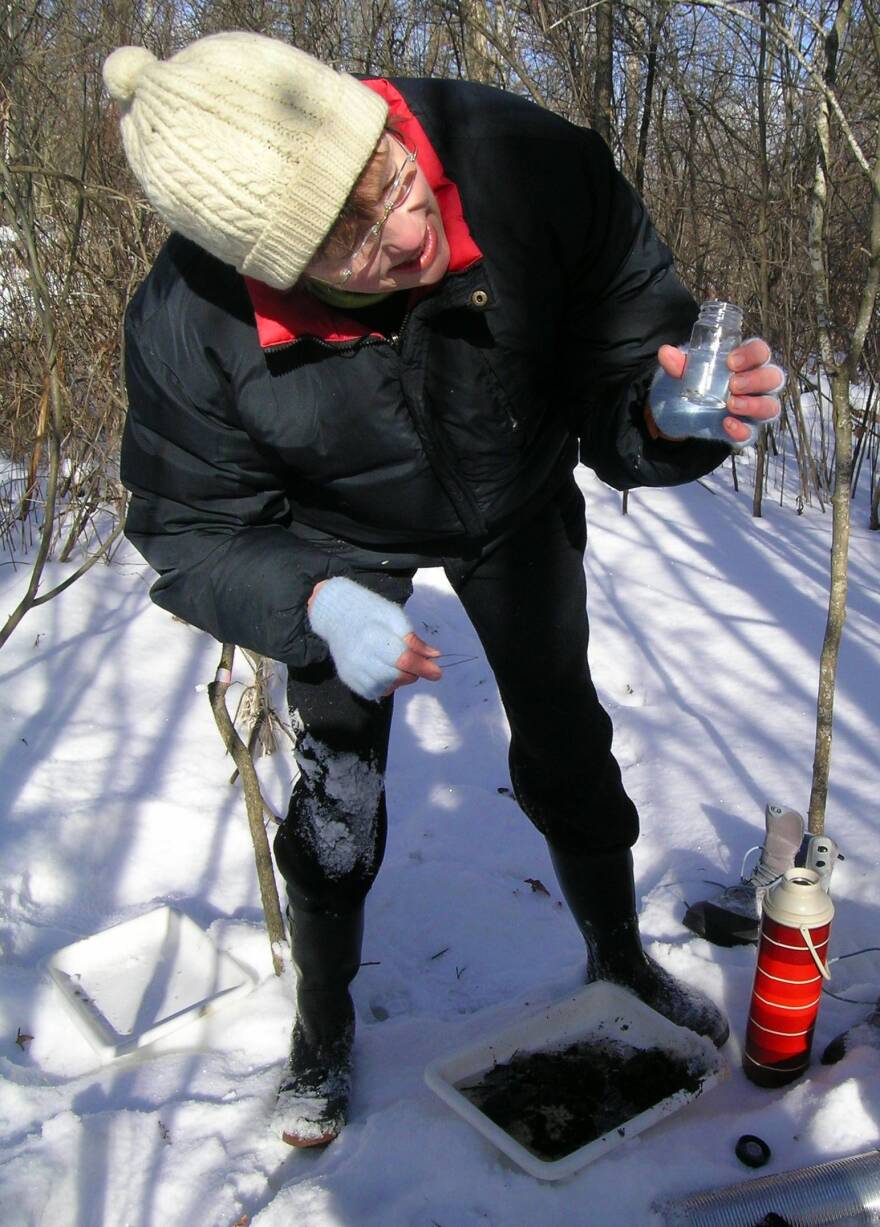
Eleven years ago on a cold January day, volunteers for the Huron River Watershed Council, Rochelle Breitenbach and Mary Bajcz trudged through the snow and thicket to get to a pristine little stream that flows into the Huron River.
They were searching for a bugs. Stoneflies.
“This has traditionally been one of the best spots to collect in the entire watershed,” Breitenbach said.
The creek was partially frozen, but there were some breaks in the ice. Breitenbach was wearing waders, so she went into the creek with a net to dip out decaying leaves where they hoped to find stoneflies. Bajcz stepped out onto the ice holding a plastic tray, ready for the contents of the net. But, the ice couldn’t take the weight. With a crash and a yell, Bajcz fell through.
Fortunately she did not fall into the water. With a temperature of 14 degrees (F), that would have been bad.
That day eleven years ago the two volunteers found a number of stoneflies. They put them into little sample bottles full of alcohol.
But, then what? For more than a decade, I wasn’t quite sure what they did with the bugs.
This year I went to a Huron River Watershed Council’s Insect ID Day. There were all kinds of sample bottles just like ones Breitenbach and Bajcz had used. They were full of different kinds of insects from many different streams. All those sample bottles full of bugs are here for the same reason: to be identified and counted just like those Stonefly larvae were eleven years ago.

Volunteers drift in and out all day long for ID Day.
Some help out because they love the river. Niklas Krantz is an intern and he had an additional reason for being there.
“I absolutely love bugs. I study them in school. They’re their own little fascinating universe within the river,” Krantz said.
Paul Steen is the group’s watershed ecologist. He hovers over the sorting and counting. He helps the volunteers when they need him. “It’s really a very simple process. The hard part is the identification which takes months, years of practice. But, the actual sorting is done pretty quickly,” Steen explained.
Sarah Collada was using a pair of tweezers to pick through the contents of one of those sample bottles.
“After you’ve totally separated everything and you’ve gone through it getting some of the larger macros and then going back over it with your magnifying glass to get some of the finer things, you’ll call over Paul and he will tell you how good you were at sorting and then he will completely classify it for you and then you go through it and count it and put it into clean sample jars.”
Why go out and collect, then count and identify these insects? Paul Steen says these bugs are indicators of just how environmentally healthy a stream or river is.

“Typically a place that is degrading will see fewer and fewer insects over time. That tells us, hey, there’s something wrong here. It doesn’t necessarily tell you what the problem is, but it tells you there is a problem. So, then we can get in there and look more thoroughly,” Steen said.
The cause of a decline in insect populations might be soil erosion, sedimentation, or maybe even chemical pollution.
Watershed groups like this one have limited amounts of money, so they have to be careful where they spend it. Monitoring how many bugs and how many kinds of bugs are in each stream help them make smart decisions about how to best keep Michigan’s rivers clean.
This story was updated to correct the spelling of Niklas Krantz's name.






